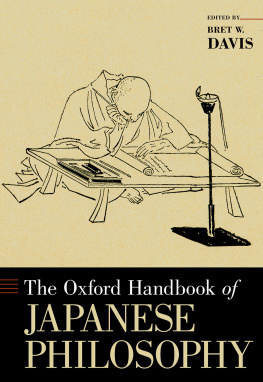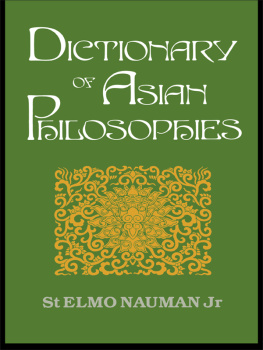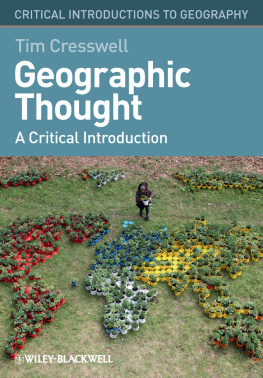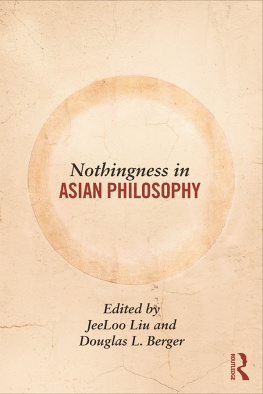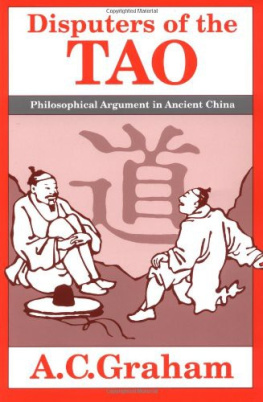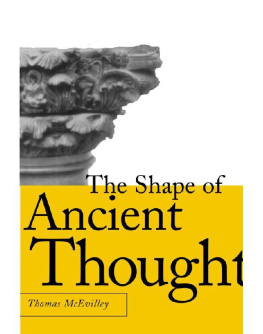THE GEOGRAPHY OF THOUGHT
THE GEOGRAPHY OF THOUGHT
How Asians and Westerners
Think Differently and Why
RICHARD E. NISBETT

This paperback edition first published by
Nicholas Brealey Publishing in 2005
Reprinted in 2007, 2009, 2010
35 Spafield Street
Clerkenwell, London
EC1R 4QB, UK
Tel: +44 (0)20 7239 0360
Fax: +44 (0)20 7239 0370 | 20 Park Plaza, Suite 1115A
Boston
Maine 02116, USA
Tel: (888) BREALEY
Fax: (617) 523 3708 |
www.nicholasbrealey.com
First published in hardback in Great Britain by
Nicholas Brealey Publishing in 2003
Richard Nisbett 2003
The right of Richard E. Nisbett to be identified as the author of this
work has been asserted in accordance with the Copyright, Designs
and Patents Act 1988.
ISBN 978-1-85788-353-4
British Library Cataloguing in Publication Data
A catalogue record for this book is available from the British
Library.
All rights reserved. No part of this publication may be reproduced, stored in a retrieval system, or transmitted, in any form or by any means, electronic, mechanical, photocopying, recording and/or otherwise without the prior written permission of the publishers. This book may not be lent, resold, hired out or otherwise disposed of by way of trade in any form, binding or cover other than that in which it is published, without the prior consent of the publishers.
Illustration credits
Page 23: Matthew Nisbett
Page 216: Jimmy Chan, Oxford University Press
Printed in the UK by Good News Digital Books.
For Matthew
Young man going east
ACKNOWLEDGMENTS
When I read the acknowledgments in other peoples books, I often wonder if all the people mentioned could really have made a significant contribution to the outcome. Please be assured that all the people mentioned below had a significant impact on this book, and some of them made enormous contributions.
The book would never have been written were it not for the fact that I have been blessed in recent years with some of the most remarkable students I have encountered in my entire professional life. Many of the ideas, especially for the experimental work, are theirs. The students include Incheol Choi, Marion Davis, Trey Hedden, Li-jun Ji, Jan Leu, Takahiko Masuda, Michael Morris, Ara Norenzayan, Kaiping Peng, and Jeffrey Sanchez-Burks.
Many of the ideas in the book have been shaped by discussions with colleagues in fields ranging from philosophy to physics. These include Susan Andersen, Scott Atran, Patricia Cheng, Lawrence Hirschfeld, Philip Ivanhoe, Qicheng Jing, Gordon Kane, Shinobu Kitayama, Hazel Markus, Donald Munro, Denise Park, Lee Ross, Edward E. Smith, Stephen Stich, and Frank Yates. They have given breadth and depth to my understanding of the East and to the framing of the ideas in this book.
Most of the students, collaborators, and colleagues went the extra mile and read early versions of the manuscript. They were joined by Richard Cassidy, Oona Cha, Dov Cohen, Joe Henrich, Peter Katzenstein, Joel Kupperman, Darrin Lehman, David Liu, Avashai Margalit, Yuri Miyamoto, Randolph Nesse, Yu Niiya, and Paolo Sousa.
I thank Philip Rappaport of The Free Press for making editorial changes that made the book much clearer and more agreeable to read, and for helping me to avoid errors, and Philip Metcalf for an excellent job of copyediting. Im grateful to my agents, John Brockman and Katina Matson, for representing my work and for their commitment to bringing science to a broad public.
I have been extremely fortunate in grant support. Institutions that provided valuable help in the form of research funds and release time include the John Simon Guggenheim Foundation, the National Institute of Aging, the National Science Foundation, the Russell Sage Foundation, and especially the University of Michigan and its Institute for Social Research in the form of generous support for the Culture and Cognition Program. Mary Cullen and Nancy Exelby of the Research Center for Group Dynamics of ISR and Eric Lomazoff of the Russell Sage Foundation provided excellent support for research and writing activities. They took burdens off of me and made chores into pleasures. Laura Reynolds of ISR solved problems I didnt know existed and provided extraordinarily able, cheerful, and willing help at every juncture.
Finally, my wife, Susan, provided invaluable advice and editorial suggestions, and, far more important, together with my children, Sarah and Matthew, sustained a life that gave meaning to the work. The book is dedicated to my son Matthew, whose interest in the East is as old as mine and whose youth has allowed him to learn far more from it than I could hope to do.
INTRODUCTION
A few years back, a brilliant student from China began to work with me on questions of social psychology and reasoning. One day early in our acquaintance, he said, You know, the difference between you and me is that I think the world is a circle, and you think its a line. Unfazed by what must have been a startled expression on my face, he expounded on that theme. The Chinese believe in constant change, but with things always moving back to some prior state. They pay attention to a wide range of events; they search for relationships between things; and they think you cant understand the part without understanding the whole. Westerners live in a simpler, more deterministic world; they focus on salient objects or people instead of the larger picture; and they think they can control events because they know the rules that govern the behavior of objects.
I was skeptical but intrigued. I had been a lifelong universalist concerning the nature of human thought. Marching in step with the long Western line, from the British empiricist philosophers such as Hume, Locke, and Mill to modern-day cognitive scientists, I believed that all human groups perceive and reason in the same way. The shared assumptions of this tradition can be summarized with a few principles.
Everyone has the same basic cognitive processes. Maori herders, !Kung hunter-gatherers, and dotcom entrepreneurs all rely on the same tools for perception, memory, causal analysis, categorization, and inference.
When people in one culture differ from those in another in their beliefs, it cant be because they have different cognitive processes, but because they are exposed to different aspects of the world, or because they have been taught different things.
Higher order processes of reasoning rest on the formal rules of logic: for example, the prohibition against contradictiona proposition cant be both true and false.
Reasoning is separate from what is reasoned about. The same process can be used to think about utterly different things and a given thing can be reasoned about using any number of different procedures.
use to understand the world, including some rules that I believed were flawed and capable of producing erroneous judgments.
, shortly before I met my new Chinese student, I had just completed a series of studies examining whether peoples reasoning could be improved by teaching them new rules for thinking. Given my assumptions about universality and hard wiring, I had initially assumed the work would show that it is difficult, if not impossible, to change the patterns of reasoning I had been studyingeven with immersion in long courses of study in fields such as statistics and economics. But to my surprise, I found substantial training effects. For example, people who have taken a few statistics courses avoid lots of errors in daily life: Theyre more likely to see that the sophomore slump in baseball could be due to statistical regression to the mean rather than to some mystical curse, and more likely to realize that an interview should be regarded as a small sample of a persons behavior and, therefore, that a wise hiring decision should be based on the larger sample of information in the application folder. Economists, it turns out, think differently about all sorts of things than the rest of us dofrom deciding whether to remain at a boring movie to reasoning about foreign policy. Moreover, I found it was possible to train people in brief sessions and change not only their thinking habits, but their actual behavior when we tested them surreptitiously outside the laboratory.
Next page

